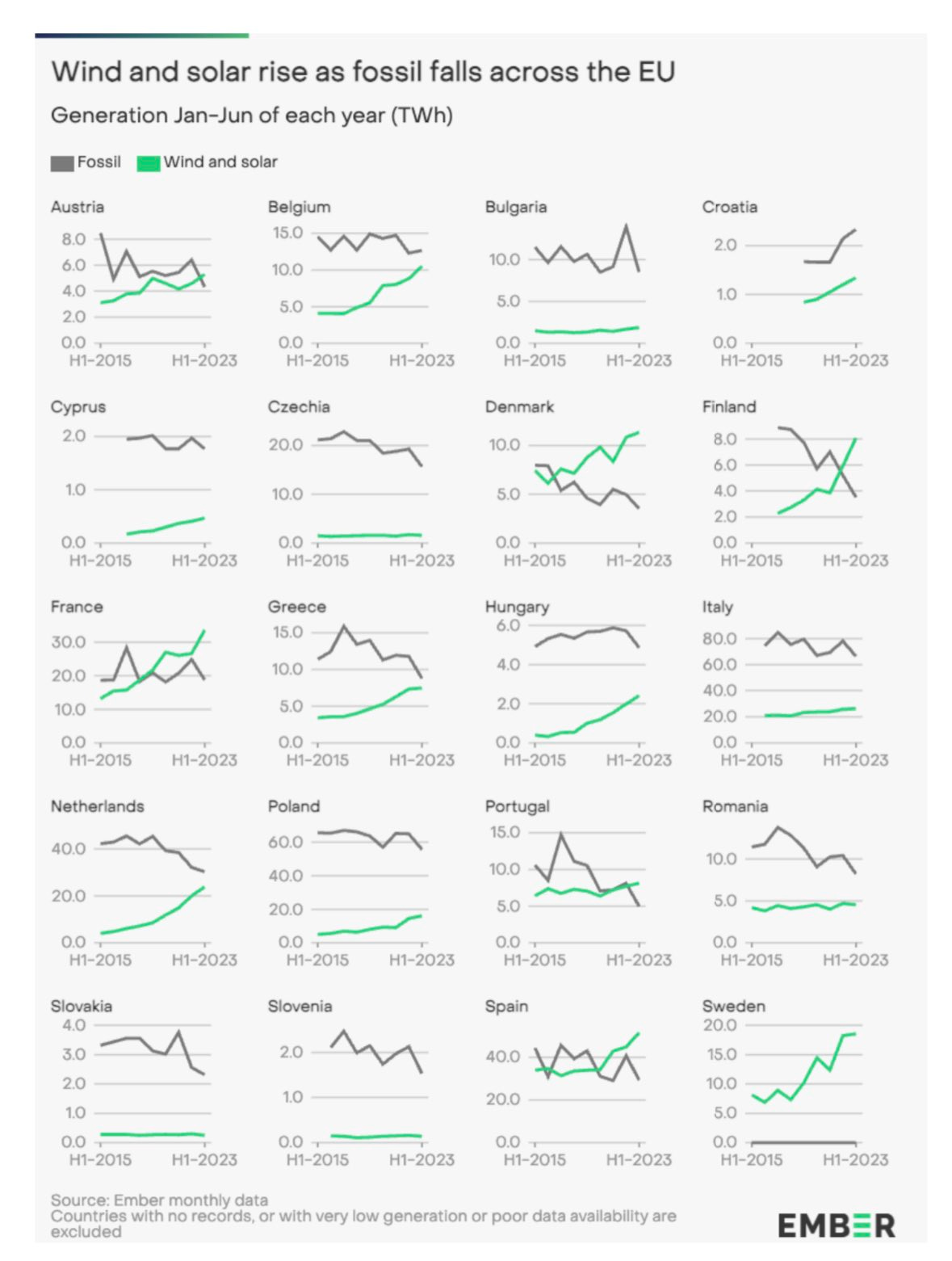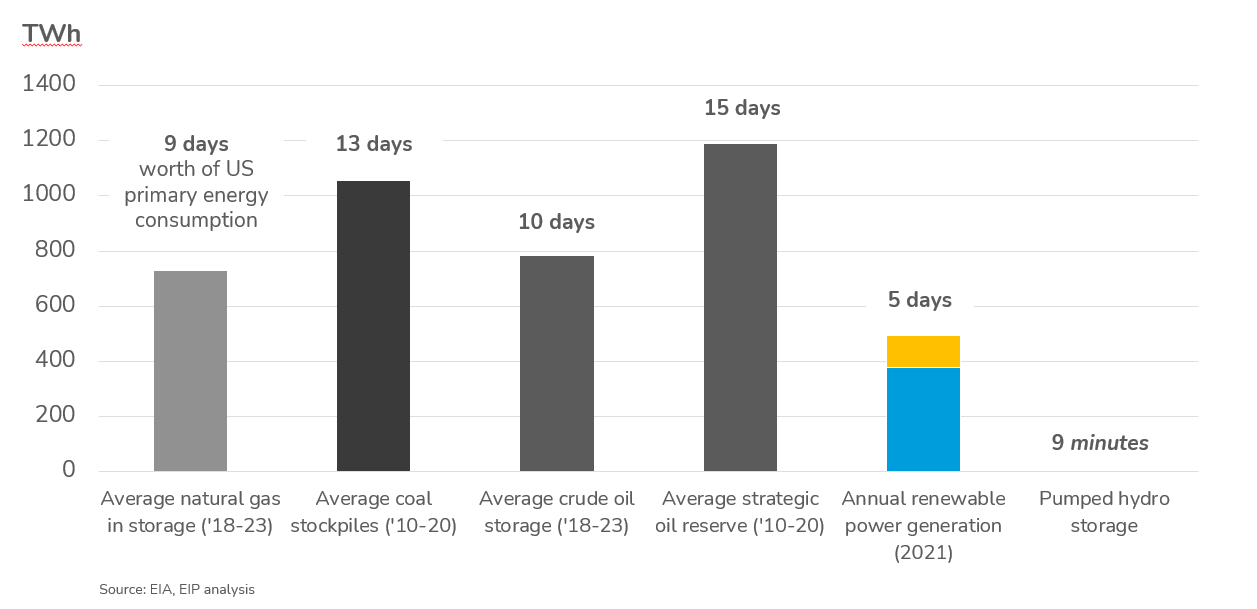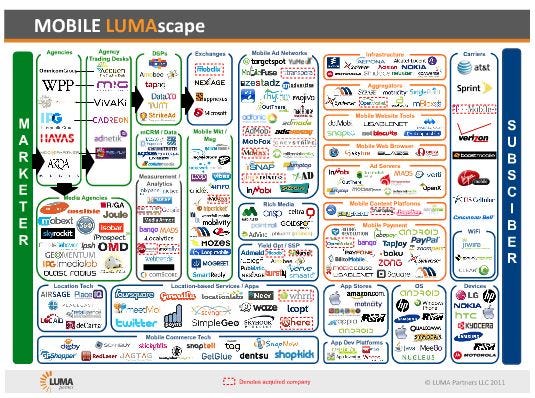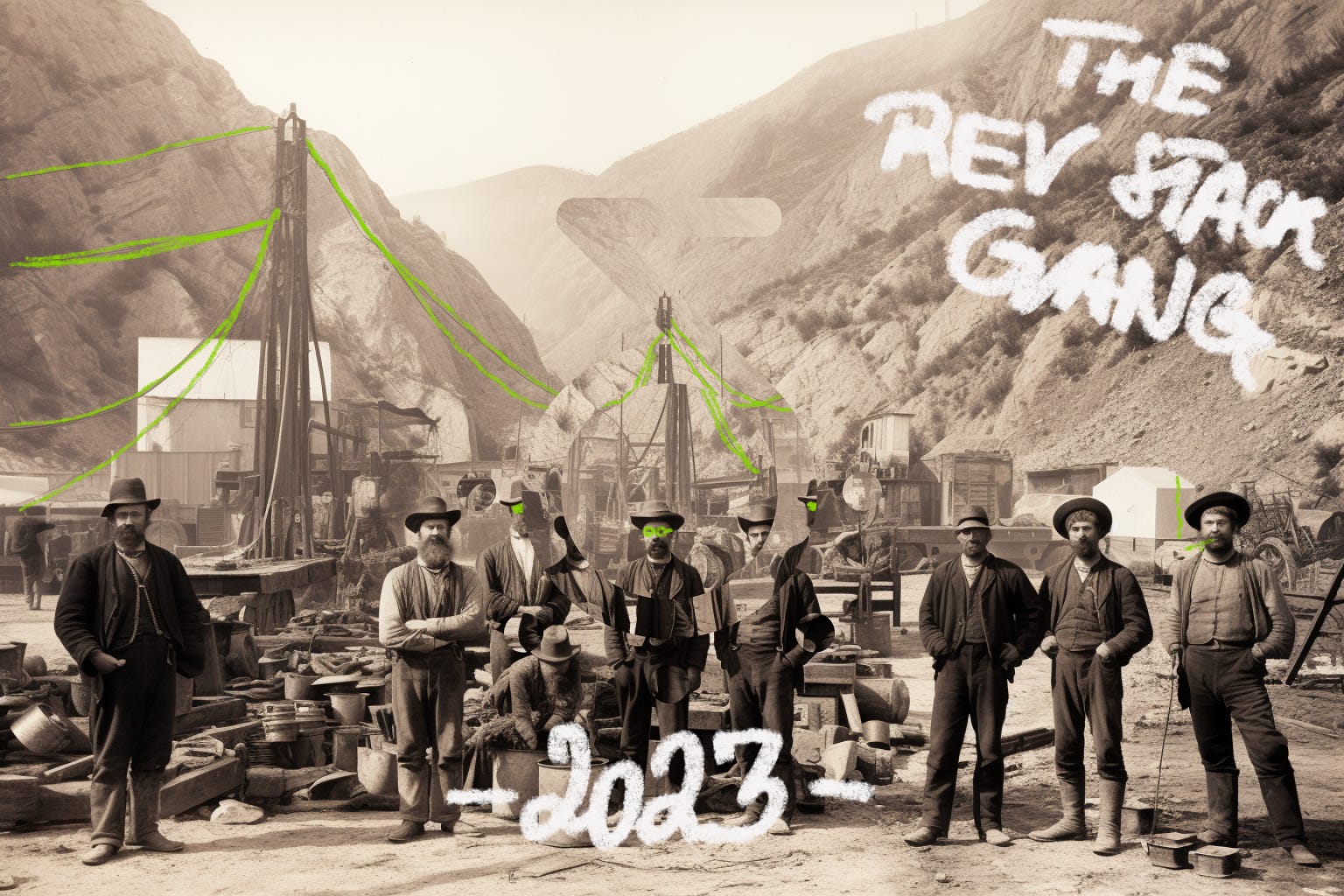👋 Waddup 1,061 climate buddies! Hope you’re doing good! 🌳
Climate is not a technology problem but a story problem.
Delphi Zero is a consultancy and newsletter about the narrative potential of climate.
2 things:
I’ll be in Malmo this week (Wed/Thu) at The Drop conference. If you are around, let me know and let’s meet in person 🇸🇪
This essay is a deep-dive into batteries x energy trading x adtech. I was super energized to write this and hope it brings value to you 🔋
Picks and Shovels for Battery Storage
By Art Lapinsch
I have been thinking about energy storage for many months. It culminated in exploring a business opportunity in the battery storage space.
Since I believe it is a positive-sum opportunity, I wanted to share my thinking in public. Think of it as an Opportunity Memo 📋
“Adapt what is useful, reject what is useless, and add what is specifically your own.”
Bruce Lee
Let’s go 👇
Picks & Shovels ⛏️
The original Gold Rush of 1849, attracted opportunity seekers (aka the “forty-niners”) to the Pacific West.
It shaped the ethos of the San Francisco Bay Area. Heck, even their football team - the 49ers - are named after it.
One of the key lessons from the Gold Rush was that growth begets growth.
When an industry is exploding, new opportunities are emerging left and right. Think of the gold miners. Most of them went out on their own to find specs of gold.
It was a nice proposition. Do the work and get rewarded.
But when we start looking at the specifics, it gets a little less cozy. An average miner was working the rocky plains of the West under the famed California Sun. They needed rugged work pants, protective hats, and a good set of tools.
Where do you think Levi’s Jeans emerged from?
You guessed it correctly: They piggybacked on the growth of the gold mining industry.
Such businesses are called Picks and Shovels businesses ⛏️
Picks & Shovels #1: Mobile App Advertising
In late 2013, life took me to Silicon Valley.
A century and a half after the original Gold Rush, not much has changed. People used laptops instead of shovels, but the aim was the same: Everyone wanted to strike gold.
I followed the call of opportunity and joined a venture studio to build digital businesses. Adtech was en vogue and so I spent most of my days wrestling with business models, arbitrage opportunities, and shooting for unrealistic deadlines. I didn’t know it back then, but in hindsight, most of my entrepreneurial experience was to create digital Picks & Shovels.
The company I had moved for was a Mobile Game Ad Network. The first time I tried to explain to my mom what I was doing for a living, she was confused. Years later it still doesn’t click but at least I had found a way to explain it to people who were curious enough to listen.
The conversation usually went something like this:
Them: What do you do?
Me: Do you know [name of most popular mobile game]?
Them: Yes, of course!
Me: We are probably the reason why you know it.
Them: How?
Me: [name of most popular mobile game] gets more users through us than through Facebook.
Them: 👁️👄👁️
Me: 👁️🫦👁️
Their bottleneck was user acquisition (aka “UA”) and we solved it for them.
Companies like ours benefitted from the explosive growth of the mobile app ecosystem. But it went even a step beyond. Growth in mobile apps led to the emergence of a whole ecosystem of solutions.
Picks & Shovels #2: Programmatic Recruitment Marketing
In 2015, I was lucky to co-found an adtech platform for another fast-growing market: High-volume recruitment.
Our company benefitted from the explosive growth in on-demand marketplace apps. Think of Uber, Lyft, Postmates, and so on.
Their bottleneck was driver acquisition and we solved it through programmatic advertising. We took an existing technology to a new market and the rest was history.
Our company got acquired in 2019.
Lesson Learned: Supply What Is Rare and Important
The relevant lessons were:
🥰 Supply-constrained Markets Are Bae: It is easier to fill (i.e. supply) an existing need (i.e. demand) than to create a new one.
🚀 Growth Begets Growth: Fast-growing industries create opportunities in its periphery.
TL;DR: Solve an urgent problem for a fast-growing market segment.
This 👆 is the practical definition of of a Picks and Shovels business right here.
The Bull Case for Battery Storage 🔋
Now let me walk you through the opportunity in the battery storage space.
Since we are dealing with climate tech, the mother of all questions is: Why bother?
In short:
40% of global total emissions (24 gigatons/yr) can be attributed to the power/electricity sector → that’s an insane number 🤯 → the emissions stem primarily from the fossil fuels used for electricity generation → energy mix matters!
Yet, at the same time demand for electricity is rising → IF we scale electricity generation with the current energy mix (predominantly fossil fuels) THEN we scale emissions proportionally → this is bad.
Logically, we must decarbonize electricity generation → we do this by deploying solar PV and wind energy → the goal is to shift the energy mix from predominantly fossil fuel-based to renewable-based.
So let’s see what’s going on 👇
Accelerated Share of Renewables (RES-E)
Renewable energy sources for the production of electricity (short “RES-E”) are rising quickly. This is mainly driven by their cost advantage.
Even if developers don’t care about the environment, it is just good business to deploy renewables. Capitalism works in our favor.

This is great news but the problem is that renewable energy sources are “variable" - solar PV doesn’t generate electricity when it’s dark and wind parks don’t generate when the wind doesn’t blow. This phenomenon is also known as “intermittency of renewables.”
Minimal Storage Capacity
The consensus how to solve for intermittency is energy storage.
(The EU Commission has a fantastic Staff Working Document on this topic if you want to go deeper.)
At times of the day when there’s a lot of sun/wind, you generate more (= Capacity/generation surplus) than what’s needed. You can store that surplus.
At times of the day when there’s no sun/wind, you draw the stored surplus electricity to meet the demand surplus.
Easy, peasy. Like a bank account for energy where you don’t have to spend all at once but can save it for later.
Sounds nice in theory but unfortunately the available storage capacity is not enough (yet).

Andy from Energy Impact Partners wrote a great primer to the energy storage situation in the US.
So, we must build more energy storage.
Massive Growth Potential
To reach various climate targets and electricity demand projections, battery storage has to grow 44x between 2021-2030.
If you like hockey sticks but don’t appreciate athletics, this chart is for you 👇

Without getting into too much detail, let me tell you that among all types of energy/electricity storage, battery storage is the 80/20 solution for the coming years.
Different energy storage solutions have different use cases. This is because they have different (a) LCOS [levelized costs of storage], (b) have significantly different dicharge times, and (c) different storage volumes.

Honestly, the energy storage technology discussion deserves its own post.
But for the sake of this essay, let’s go ahead with the notion that batteries are a suitable technology to fill the immediate flexibility needs of the electricity grid.
Batteries are an answer to the question: How do we shift electricity generation from the peak generation hours (daytime) to the peak consumption hours (mornings and evenings)?
The Bottle Neck: Revenue Optimization for Batteries
What follows is a nice opportunity for battery storage operators but it needs proper financial incentives.
Their services are in high demand but they have a problem to solve: How to optimize the revenue for their battery?
Unlike in other industries, energy assets are capital intensive.
High CAPEX (Capital Expenditure) up front requires financing.
Financing (i.e. loans and interest rates) is cheaper if you have certainty about revenues.
Hence, energy storage operators must improve their ROI (Return on Investment) to optimize the economics of their business model.
Since batteries can sell their energy into different markets, the million dollar question is: Where to make a buck with my battery?
This is where a new Picks and Shovels opportunity is forming.
Three Unlocks for Battery Storage 🔋
Let’s go step by step to unpack this market.
Unlock #1: Legal Basis for Market Participation
Let’s start with what the law has to say in Europe 🇪🇺
The Electricity Market Directive, has a clear definition of energy storage:
Dir. 2019/944 - Art. 2(59)
‘energy storage’ means, in the electricity system, deferring the final use of electricity to a moment later than when it was generated, or the conversion of electrical energy into a form of energy which can be stored, the storing of such energy, and the subsequent reconversion of such energy into electrical energy or use as another energy carrier;
This definition is broad enough to include all types of storage technologies (as discussed above 👆).
Then, one of the most important provisions of the Electricity Market Regulation says the following:
Reg. 2019/943 - Art. 3(a)
Member States, regulatory authorities, transmission system operators, distribution system operators, market operators and delegated operators shall ensure that electricity markets are operated in accordance with the following principles:
(j) safe and sustainable generation, energy storage and demand response shall participate on equal footing in the market, under the requirements provided for in the Union law;
(m) market rules shall enable the efficient dispatch of generation assets, energy storage and demand response;
(n) market rules shall allow for entry and exit of electricity generation, energy storage and electricity supply undertakings based on those undertakings' assessment of the economic and financial viability of their operations;
To translate this into human-readable language: Storage technologies can participate in all energy markets.
These two paragraphs from European Energy Law tell us everything we need to know:
ALL storage technologies can participate in ALL electricity markets.
Greenlight for entrepreneurs 🚦
To understand the various electricity markets, you can read my previous essay 👇
Unlock #2: Availability to Relevant APIs
In climate tech, you need many things to work in tandem: it has to be good for the climate, you need regulatory certainty, it has to be technologically doable, and commercially viable.
We know that energy storage helps RES-E to be deployed. So it’s 1:0 on the decarbonization/sustainability front ✅
Then, we just learned that the regulator says that batteries can enter the arena. 2:0 scored by the legal corner ✅
Now let’s look at the tech.
Batteries have been around for a very long time but if we want them to participate in energy markets, they need to operate at the speed of those markets. This means that batteries need to see what’s going on in the market (i.e. price signals, electricity demand, etc.) and have to be able to execute in real-time (i.e. participate in the market auctions; draw electricity from the market; feed electricity into the market).
The smallest common denominator for this is data. Luckily, much of the required data is currently available via APIs:
Energy Management System (EMS) → Read/write access for a battery. Think of SoC (State of Charge %), Temperature, etc. → This allows us to control the energy storage asset in real-time.
Energy Markets → Read/write access for electricity markets. Think of price signals and bidding access to various markets like the Day-Ahead and Intra-day markets of EPEX/Nordpool as well as grid-related ancillary markets like Regelleistung.net.
3rd-Party Data → Read access to 3-rd party data like carbon intensity in various countries or weather data. This category has no limits. Simple rule: IF it helps energy traders to generate alpha THEN it will be used.
3:0 scored by data liquidity ✅
Unlock #3: Revenue Stacking
In a recent interview, a former energy trader said the following:
Over the next decade I think we will see energy storage shift away from primarily providing ancillary services to doing much more energy arbitrage, and effectively acting as a clean capacity resource. - Emma Konet (Founder & CTO, Tierra Climate)
This brings us back to the commercial viability of energy storage. Where to make a buck with a battery?
A batteries ability to sell in various markets is called Revenue Stacking. My friend Gael, wrote a great piece about it.
Before we dive into the last section, I wanted to say that all of the above are my best hypotheses right now.
I’d love to learn where I’m right/wrong. If you know someone who can confirm or disprove any of the above, please forward it to them 🙏
Revenue Stack Optimization: The Picks & Shovels Opportunity
There are a couple of companies currently attacking this space:
Fluence: Siemens & AES joint-venture.
Tesla Autobidder: Tesla’s spin-off product for battery monetization.
Equilibrium Energy: They rent the battery asset from the battery operator and try to maximize revenues - aka “tolling contract”. Quasi “media buying for battery inventory”.
enspired: An algorithmic energy trading shop.
GreenAI: Algorithmic trading software for energy markets.
… expect many more to join rather soon.
Done well, this would be 4:0 - commercial viability for battery storage ✅
I’m excited to see what will happen in the coming years. My guess is that the growth of the battery storage industry will kickstart various markets in its proximity.
A while ago, I wrote about the coming Cambrian explosion in electricity markets, but I’ll have to write a storage-specific piece in the coming weeks. Stay tuned.
If you want to be notified by mail when this piece comes out, sign up here 👇
Given that the problem is called Revenue Stacking, I would call the solution Revenue Stack Optimization (RSO).
At the end of the day, RSO is algorithmic trading optimization.
When I talked with my former adtech co-founder Spencer, he half-jokingly said: “It’s just adtech. Everything is just adtech… Actually, it is just economics.”
What he meant is that trading decisions are trying to uncover arbitrage opportunities in markets.
Electricity trading is a market. Stock trading is a market. Advertising is a market.
Since advertising and stocks are primarily trading information (i.e. digital quantities) and not commodities (i.e. physical quantities), they had it much easier and paved the way.
Fintech and adtech solved their respective markets via programmatic/algorithmic trading. My intuition tells me that energy trading will follow their playbook.
As an entrepreneur, I have never seen such a market:
🌍 Purpose: If you solve this problem, you’re doing something good for the environment.
🏒 Growth: FOURTY FOUR TIMES!
💶 Supply-Constrained & Urgent Need: Energy storage operators need revenue visibility and predictability.
🔓 Right Unlocks: Market conditions are ripe for a solution.
A new Gold Rush is under way in battery storage.
The question is: Who is going to provide the revenue stack optimization? ⛏️
🙏 Thanks, Philipp, Sara, Mike, Chris, Gael, and Spencer for inspiring, researching, and discussing.
If you have thoughts or want to collaborate, please reach out to me.
Open Questions
I’ll collect/expand a list of relevant questions.
What happens to business models if/when electricity prices drop/increase significantly (approaching zero)? → What are the knock-on effects for all types of energy sources for electricity generation?
How is this opportunity different for other types of energy storage technologies?
Are there companies who specialize on trading strategies that exclusively trade digitally and avoid any commodity delivery?
Are there any hidden incentive systems that could lead the rev stack optimization algorithms into undesirable territory?
What are non-obvious/under-valued/-indexed third-party data sources that might be relevant for energy arbitrage?
What happens when the AdTech crowd finds out about this opportunity? /s
AdTech
If you are curious about adtech, check this fantastic resource.












